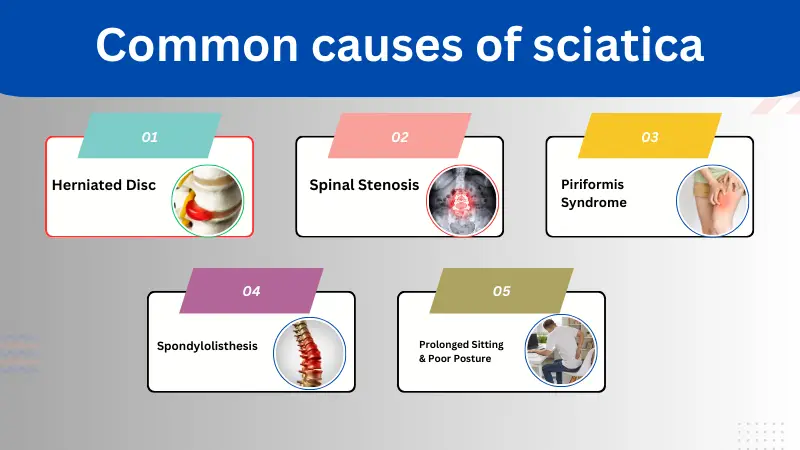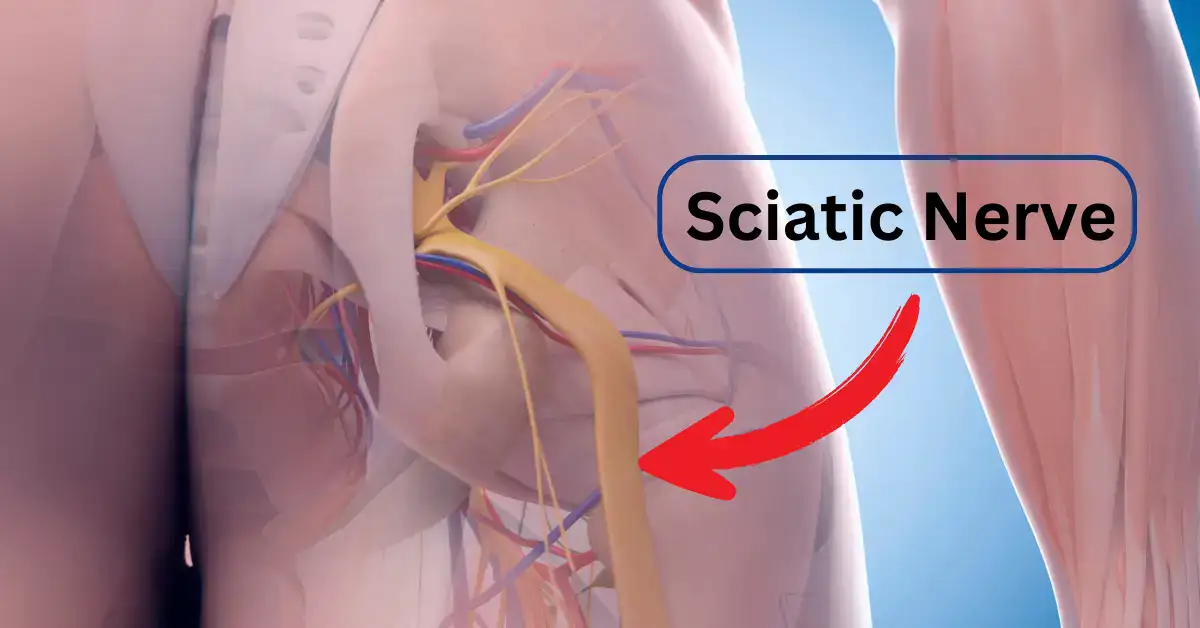Introduction
Physiotherapy for sciatica pain involves a combination of targeted exercises, stretching routines, and strengthening techniques designed to reduce nerve compression, improve flexibility, and promote overall spinal health. By addressing the root cause of the pain, physiotherapy not only provides relief but also prevents future occurrences.
Sciatica pain can be a debilitating condition that significantly impacts daily life, making simple movements like walking, sitting, or bending excruciatingly painful. It stems from irritation or compression of the sciatic nerve, the longest nerve in the body, which runs from the lower back through the hips and down each leg. If left untreated, sciatica can lead to chronic pain, reduced mobility, and a lower quality of life.
Many people turn to painkillers for temporary relief, but physiotherapy offers a long-term, natural solution to manage and alleviate sciatica pain effectively. By addressing the root cause of the pain, physiotherapy not only provides relief but also prevents future occurrences.
In this comprehensive guide, we will explore the causes and symptoms of sciatica, and we will introduce five highly effective physiotherapy exercises that can help alleviate pain and restore mobility. If you are seeking physiotherapy for sciatica pain at home, Physio at Home offers expert physiotherapy services tailored to your needs in the comfort of your own space.
Understanding Sciatica Pain
Sciatica is a condition that causes pain along the sciatic nerve, which runs from the lower back through the hips and down each leg. It occurs when the nerve is compressed due to conditions like herniated discs, spinal stenosis, or muscle tightness.
Causes of Sciatica
Understanding the root causes of sciatica pain is crucial for effective treatment. Several conditions can contribute to sciatic nerve compression:
- Herniated Disc: One of the most common causes, a herniated or slipped disc occurs when the soft inner gel of a spinal disc leaks out and presses on the sciatic nerve, leading to irritation and inflammation.
- Spinal Stenosis: This condition results from the narrowing of the spinal canal, putting pressure on the nerves. It is often associated with aging and can lead to chronic sciatic pain.
- Piriformis Syndrome: The piriformis muscle, located in the buttocks, can spasm and press against the sciatic nerve, causing pain and discomfort.
- Degenerative Disc Disease: As we age, the discs in our spine lose hydration and flexibility, which can result in nerve compression and sciatic pain.
- Spondylolisthesis: This occurs when one vertebra slips out of place over another, potentially pinching the sciatic nerve and causing pain that radiates down the leg.
- Trauma or Injury: Accidents, falls, or sports injuries can damage the spine or surrounding tissues, leading to sciatica.

Symptoms of Sciatica
Physiotherapy for sciatica pain is essential for managing symptoms, which can vary depending on the severity and underlying cause. The most common symptoms include:
- Radiating Pain: A sharp, shooting pain that starts in the lower back and extends down one or both legs. The pain is often more intense on one side.
- Tingling or Numbness: A sensation of pins and needles, often felt in the buttocks, thighs, legs, or feet.
- Muscle Weakness: Sciatica can cause weakness in the affected leg, making it difficult to walk or perform daily activities.
- Burning Sensation: Some people experience a deep, burning pain along the sciatic nerve pathway.
- Pain that Worsens with Movement: Activities like standing for long periods, sitting, or bending forward can intensify sciatica symptoms.
How Physiotherapy for Sciatica Pain Helps
Physiotherapy for sciatica pain focuses on reducing nerve compression, improving flexibility, and strengthening the muscles supporting the spine. It involves stretching, strengthening, and mobility exercises to promote healing and prevent recurrence. If you are looking for physiotherapy for sciatica pain at home, Physio at Home provides expert physiotherapy services in the comfort of your home to help you recover effectively.
5 Effective Exercises for Sciatica Pain Relief
1. Sciatic Nerve Glide
This exercise helps reduce nerve irritation by mobilizing the sciatic nerve gently.
How to Perform:
- Sit on a chair with both feet flat on the floor.
- Extend the affected leg straight and flex your foot upwards.
- Tilt your head slightly backward while extending the leg.
- Hold for a few seconds and return to the starting position.
- Repeat 10 times.
2. Seated Piriformis Stretch
The piriformis muscle can sometimes press against the sciatic nerve, causing pain. Stretching it can provide relief.
How to Perform:
- Sit on a chair and cross the affected leg over the opposite thigh.
- Keep your back straight and gently lean forward.
- Hold the stretch for 20–30 seconds.
- Repeat 3 times.
3. Knee-to-Chest Stretch

This exercise helps relieve lower back tension and reduces pressure on the sciatic nerve.
How to Perform:
- Lie on your back with your legs extended.
- Bring one knee toward your chest and hold it with both hands.
- Keep the opposite leg straight.
- Hold for 20–30 seconds and switch legs.
- Repeat 3 times.
4. Pelvic Tilt
Pelvic tilts help strengthen the core and lower back muscles, improving spinal support.
How to Perform:
- Lie on your back with your knees bent and feet flat on the floor.
- Tighten your abdominal muscles and flatten your lower back against the floor.
- Hold for 5 seconds and relax.
- Repeat 10 times.
5. Cat-Cow Stretch
This yoga-based movement improves spinal mobility and reduces stiffness.
How to Perform:
- Get into an all-fours position (hands and knees on the floor).
- Inhale and arch your back, lifting your head (Cow position).
- Exhale and round your back, tucking your chin (Cat position).
- Perform 10 repetitions.
Home Remedies for Sciatica Pain Relief
Along with physiotherapy for sciatica pain, you can manage sciatica at home by:
- Applying hot or cold packs to the lower back.
- Practicing gentle stretching exercises daily.
- Maintaining a healthy weight reduces pressure on the spine.
- Sleeping on a firm mattress to support spinal alignment.
- Avoid heavy lifting and sudden movements that can strain the back.
When to Seek Professional Help
If your sciatica pain lasts for more than 4-6 weeks and worsens despite home remedies
It’s time to consult a qualified physiotherapist for specialized treatment.
If you are looking for Physiotherapy treatment in Lahore you can book an Appointment with our expert Physiotherapists.Trade globally, invest confidently — real‑time insights, seamless access, trusted performance is veridian matrix ai legit.
Why Choose Physio at Home for Sciatica Pain Treatment?
At Physio at Home, we offer professional home-based physiotherapy services in Lahore, ensuring you receive personalized care with Compassion at your doorstep.
Our expert physiotherapists provide:
- Customized Treatment Plans tailored to your specific condition.
- One-on-one attention for better recovery and faster results.
- Pain Management & Strengthening Exercises to prevent recurrence.
- Flexible Scheduling so you can recover comfortably at home.
FAQs
1. Can physiotherapy completely cure sciatica pain?
Physiotherapy for sciatica pain can significantly reduce symptoms and prevent recurrence, but the effectiveness depends on the underlying cause and adherence to treatment.
2. How long does it take to see results from physiotherapy for sciatica pain?
Many patients experience relief within a few weeks of regular physiotherapy exercises.
3. Is physiotherapy safe for all cases of sciatica?
Yes, but it’s crucial to consult a physiotherapist to tailor effective exercises based on your condition.
4. Can I do these physiotherapy exercises for sciatica pain at home without supervision?
Yes, but it’s recommended to have an initial consultation to ensure proper form and effectiveness.
Conclusion
If you’re struggling with sciatica pain and looking for a reliable solution, physiotherapy for sciatica pain at home can be a highly effective approach. At Physio at Home, our experienced physiotherapists provide tailored treatment plans to help you manage pain, restore mobility, and prevent future episodes. Our home-based physiotherapy services ensure you receive professional care in a comfortable environment, making recovery more convenient and effective.
Don’t let sciatica pain affect your daily life. Contact Physio at Home today at 03124090036 or visit physioathome.pk to schedule a consultation and start your journey towards pain-free living.



